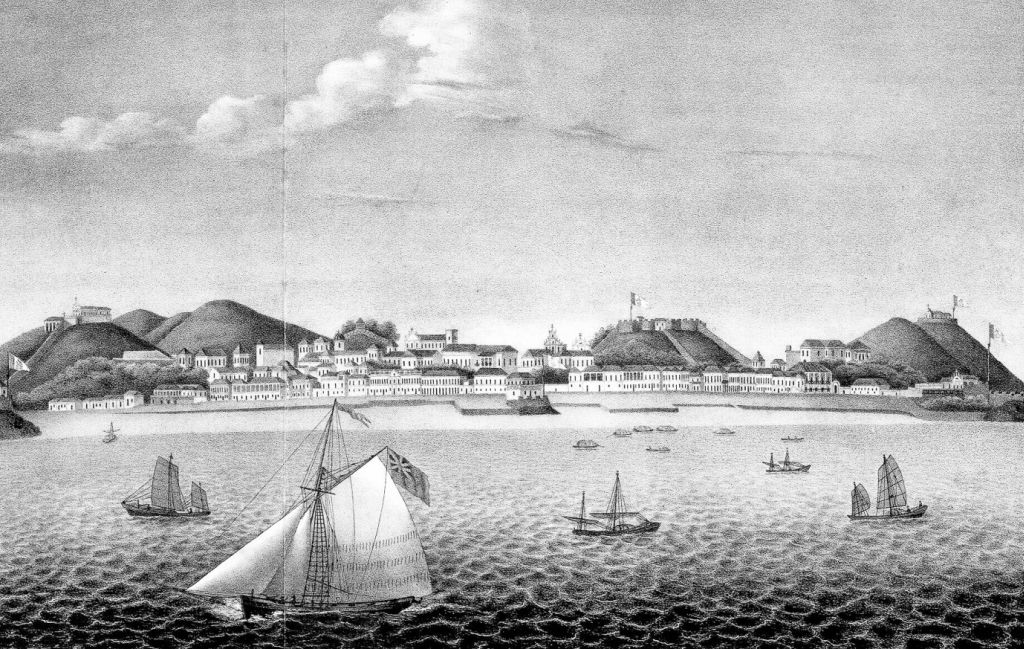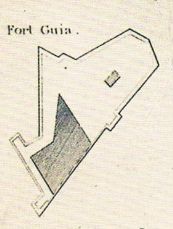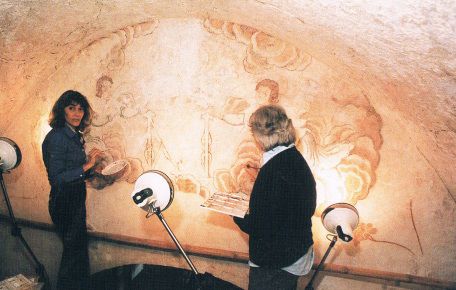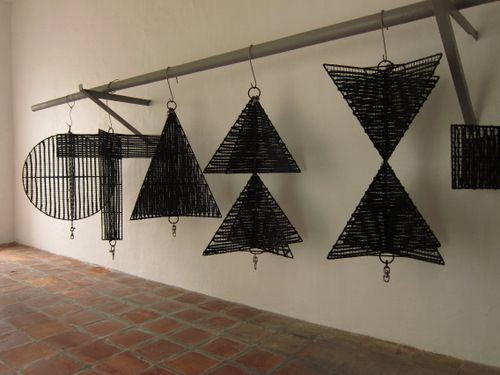Guia - fortress, chapel and lighthouse
More than 300 years ago as mariners approached Macau the first glimpse they had of this tiny European outpost in East Asia was a little chapel perched improbably at the top of a steep hill. After months at sea, perhaps calling at various ports in East Africa and South Asia, sailors were keen to see something familiar. The sight of this European building must have been a considerable thrill. The chapel was dedicated to Our Lady of the Snows in reference to the ancient church built on top of the Esquiline Hill, one of the original Seven Hills of Rome, but is more commonly known as capela de Nossa Senhora da Guia, the chapel of Our Lady of Guidance.
Guidance has always been the role of Guia. The Swedish merchant Anders Ljungstedt, who wrote the first history of Macau in English, published in 1836, commented on the importance of Guia in the guidance of ships. He wrote: "the fort of Guia serves during daylight as a guidance for ships steering for Macao and Canton. When a ship is descried [i.e. sighted] the Governor is advised by signals of her approach, and when her flag can be discerned by writing, the commanding officer sends down to him. On the arrival of a Portuguese vessel a bell is rung."1 This bell, originally cast in 1707, still hangs in a small belfry about two metres high. It bears a dedicatory inscription set into the bell when it was recast in 1824, indicating that it was then consecrated and baptised with the names of Mary by the Most Excellent Bishop and Governor, Dom Friar Francisco de Nossa Senhora da Luz Chassim on 30 June that year. 2
The fortress built around the steep sides of Guia Hill predates the chapel. Guia was already partially fortified by 1622, when the Dutch attempted to seize Macau on the feast day of St. John the Baptist, 24 June. Guia played a significant role in repelling the Dutch, who had landed a little to the North East and began to advance on the city. A shot from Monte fortress set off an explosion in the wagon in which the Dutch had their ammunition, whereupon they retreated in disorder, having sustained many casualties, including most of their officers. Attempting to regroup, they decided to climb Guia Hill to get a better view of their enemy, but their ascent was resisted by a small party of thirty men, whose ferocity and effective use of the high terrain forced the Dutch to abandon this plan. Retreat soon became a rout and the Dutch, who had greatly outnumbered the Portuguese defenders, returned to their base in Batavia.
Thereafter the fortifications were strengthened in earnest. The towering walls and the fort above them were completed in 1638 in the expectation of a renewed Dutch attack. This never happened, but Guia remained a military area until 1976. The completion of the fort was marked by a stone bearing the Portuguese royal arms. This seems to have been an act of defiance by the Macau Council, soon to be known as the Leal Senado, against Spanish authority, since Portugal was under Spanish rule from 1580 until 1640. Beneath the royal arms of Portugal is an inscription, reading, in translation:
THE CITY ORDERED THIS FORT TO BE BUILT AT ITS OWN EXPENSE BY CAPTAIN OF THE ARTILLERY ANTÓNIO RIBEIRO RAIA. IT WAS STARTED IN SEPTEMBER 1637 AND WAS FINISHED IN MARCH 1638, THE GENERAL THEN BEING DA CAMARA DE NORONHA.
It seems that the chapel was built at the same time, perhaps replacing an earlier 'hermitage', for the defenders of Macau relied on spiritual as well as physical resources. Plainly, the chapel was built as part of the defensive structure, for the walls and roof are very solidly constructed. Beneath its red-tiled pitched roof, the tiny chapel has a barrel vault ceiling for strength. In the centre, a thick Romanesque arch supports the roof; this building was meant to withstand cannon fire. Therefore it has few windows. A miniature quatrefoil window at the western end lets in light above the small doorway. Like so many baroque churches, the chapel is decorated with frescoes on the walls and ceilings, but by the time the chapel was completely restored between 1998 and 2001, many had deteriorated beyond recovery. Led by a team of experts, the restoration of the surviving frescoes took three years. The frescoes mostly show vines and flowers. There are several angels, but only one saint. Perhaps in a pointed reference to the repulse of the Dutch attack on his feast day, this is St John the Baptist. Unlike most representations, St John is not shown baptising Jesus. He is a boy, cradling a tiny lamb in his left hand. It is a powerful image of protection; perhaps the little lamb was Macau itself.3
Protection is what Guia was good at. As late as World War II, several concrete bunkers fitted with anti-aircraft guns were built along the ridge running north from the ancient fortress. It seems that the guns were never used, though in a series of American raids in January 1945 the nearby hangar used by PanAm as the shore base for its pre-war flying boat service was attacked. This had been used to store aviation fuel, potentially useful to the Japanese. Naturally, the fuel was destroyed in this raid.
A quite different idea of protection was the construction in 1864 of the first lighthouse on the China coast. Using machinery designed by a Macanese citizen, Carlos Vicente da Rocha, it was first lit on 24 September 1865, originally with a kerosene lamp.4
However, after only nine years of operation, it was damaged by the Great Typhoon in 1874 and remained out of service until 1910. This lighthouse may have been built in an attempt to win back part of the shipping lost to Hong Kong after the British colony was established in 1841, leaving Macau almost devoid of trade. However, lacking a deep-water port and harbour infrastructure, Macau could not compete with its larger neighbour. A few years later the Hong Kong government commenced building a more important lighthouse, the Gap lighthouse, perched spectacularly on a rocky islet twenty-six miles south of Hong Kong. Completed in 1897, it had taken six years to build at the then enormous cost of $150,000. This was a huge boon to shipping approaching Hong Kong, and a very important step forward.
This did not mean that the Guia lighthouse was useless. It doubled as a weather station and being on the highest point in Macau, it was in the ideal position for signals warning of approaching typhoons. There were ten signals of different shapes, made of wickerwork and painted black. When severe conditions threatened, these signals were hoisted according to the meteorological outlook. Anything above No. 8 was serious, and No. 10 warned of an approaching catastrophe. This is actually what happened in 1874, when the Great Typhoon devastated Macau, killing thousands of people. Among the many buildings that had to be rebuilt was the lighthouse itself, though the sturdy chapel survived the tempest.
The vast casinos of modern Macau dwarf all its ancient buildings, crowding around them and towering over many. Guia, often neglected and less visited than the other iconic and more accessible World Heritage sites, deserves more attention than it receives.




